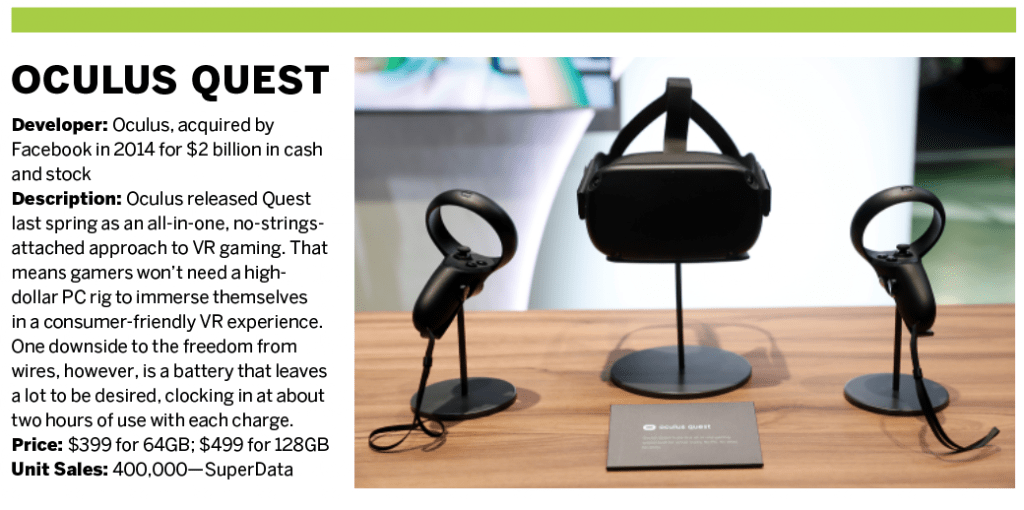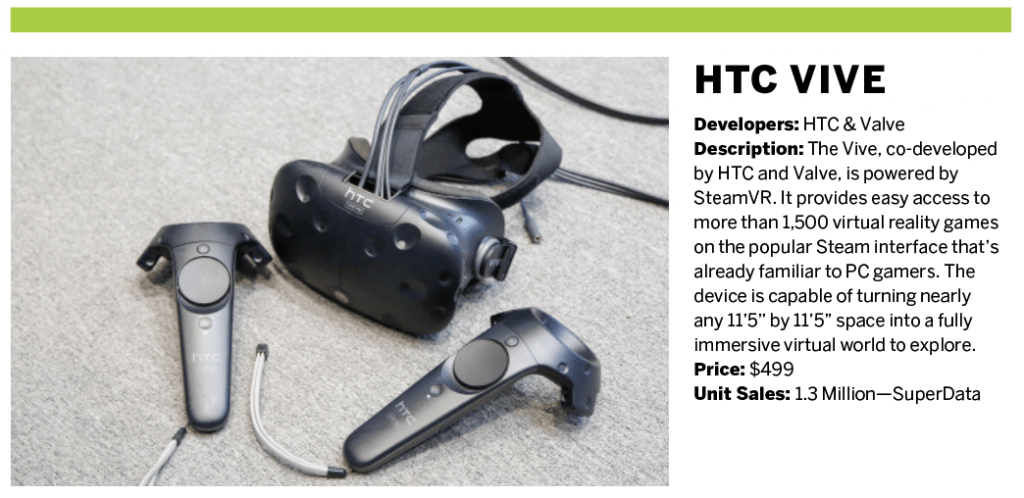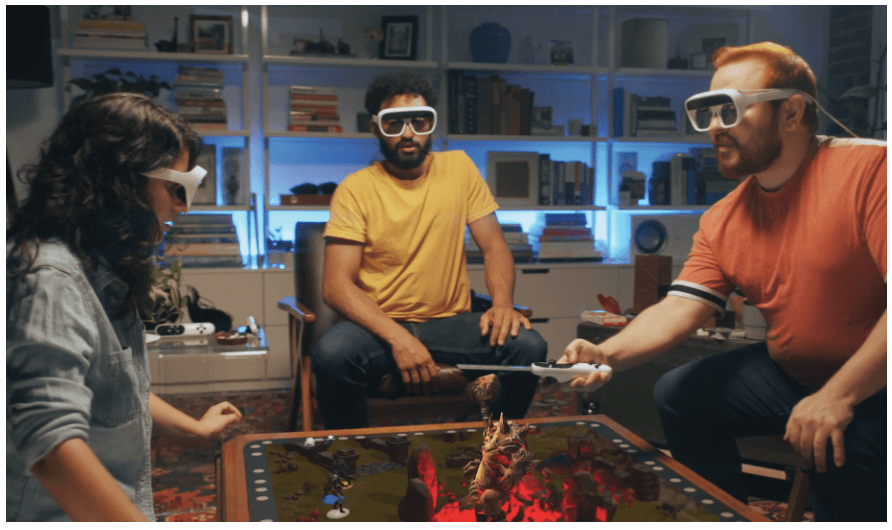Real Possibilities in Spatial Computing
An unprecedented combination of the real and unreal is set to engulf humanity, thanks partly to the spread of spatial computing
Former Microsoft tech evangelist Robert Scoble, no stranger to augmented or virtual reality, today serves as chief strategy officer of spatial-computing consultant Infinite Retina. He’s perhaps best known for his technology-focused blog, Scobleizer. Luckbox asked him to forecast what’s ahead in 2020 for AR and VR.
Get ready to blend the real and the virtual. In the coming decade, spatial computing is poised to change the way people live, work and play. All it requires is putting on an almost normal-looking pair of eyeglasses to connect with super-sophisticated cameras, sensors, computers and the digital cloud. The combination of devices creates a “virtual being”—a digital partner that not only knows where it is in space but also understands a lot about the person using it.
The phrase “mixed reality” is tossed around to describe the way spatial computing superimposes digital creations on the natural world. A blank wall can become a video screen for Hollywood’s latest box office hit. A barren extra bedroom is transformed into a welcoming pub. An utter void is filled by a three-dimensional object that the user can circle to view from different angles.
There’s also talk of humans and machines forming “partnerships” to traverse the landscape together and manipulate objects cooperatively via the medium of spatial computing. Digital devices could even serve as prophets, employing prediction engines to foretell the actions of humans and other machines. Combining these capabilities yields what some view as the birth of something almost alive.
Four eyes
But back to the eyeglasses. Qualcomm, a chipmaker that licenses other companies to use its patented technology, announced in November that its new chipset will power devices that look a lot like vision-correction glasses but have screens and seven cameras.
Qualcomm isn’t alone in conjuring up tech magic in eyewear. Microsoft has already introduced the second version of its HoloLens. Apple has leaked word that it plans to reveal related products by 2022, and Facebook is reportedly working on a similar product.
So, what are they seeing with these 21st century spectacles? Well, spatial computing creates a new dimension where humans, robots or virtual/synthetic beings move around as they work or play. The purest forms are augmented and virtual reality (AR and VR), but a new wave of devices is coming in the next one to three years, and that broadens human horizons and brings new opportunities to investors.
Spatial Computing is also at work in robots and autonomous cars, which use similar sensor arrays and artificial intelligence to track objects. Qualcomm, for example, has announced new AI (artificial intelligence) capabilities that detect and identify objects, which will enable developers to add new capabilities to spatial computing applications.
Spatial computing can be done on mobile phones, but poorly, because mobile phones aren’t optimized for moving around inside computing. But by the end of this year, new iPhones will arrive with more detailed 3D sensors that will enable developers to add some of these capabilities.
Meanwhile, glasses that grant entry to this new world are starting to arrive on the market from companies that include Magic Leap, Nreal and Vuzix. Last month, Qualcomm showed off its new XR2 chipset for a new group of glasses.
These new devices, called “XR” for “extended reality,” build upon virtual reality headsets and technology that’s increasing in popularity. In fact, reviewers included the Oculus Quest in lists of devices of the year for 2019 (see below). Still, newer devices like Oculus Quest, a $400 standalone virtual reality headset, or the $3,500 Microsoft HoloLens, have yet to win over consumers.

AR and VR
Virtual reality means not seeing the real world and instead moving around in a totally virtualized one. Oculus Quest is one of many competitors at differing price points, but it’s a favorite because of its affordable price and because it’s totally standalone with no PC needed. Most of its competitors require a cord to an expensive PC, which limits their usefulness.
Augmented reality allows users to walk around the real world while seeing virtual items pop up. The best examples include Microsoft’s HoloLens or Magic Leap’s ML1 headset.
So, why haven’t sales taken off? Well, the devices are big and ugly. Most are expensive. None come with optics or monitors inside that are good enough for users to read text, and they aren’t comfortable enough or sharp enough to wear to watch a movie. By 2023, that will change due to a new wave of optics and capabilities, thanks to Qualcomm.
So, cautious investors should keep watch on this field, and aggressive investors may place some bets now. Really aggressive investors, like Tipatat Chennavasin, along with his partners at TheVRFund, or Josh Wolfe at LUX Capital, have been investing for years. They haven’t found a unicorn yet but were in Beat Games, which just sold to Facebook. Facebook has spent billions and is gearing up to spend even more over the next decade. Its lists of open positions were often hundreds of jobs long.
But don’t indulge in FOMO—the fear of missing out. This game has barely begun, and the unicorns probably haven’t been born. The big players—Facebook, Microsoft, Sony or Apple—are spending billions in R&D and might squash smaller companies. Facebook has already started Horizon, which it bills as a virtual reality world. Other players include Sansar, from the creators of Second Life, and AltSpace VR, which is owned by Microsoft.
New kinds of infrastructure companies have been launched. They will need a new kind of cloud computing, one that merges detailed maps, 3D systems from video game producers and data from new kinds of 3D sensors. These “AR Clouds” and companies like 6D.AI are offering new kinds of video games and providing details about the world, thanks to these new systems.
Spatial computing is already changing human interaction. Social gaming systems, like RecRoom from Seattle’s Against Gravity, make it possible for sports fans to play basketball over the internet against other people.

Practical applications
The workplace is changing, too. Thanks to virtual reality, the Magic Leap headset enables users to collaborate remotely with co-workers. They can manipulate 3D items on top of the real world while seeing colleagues just as they would if they were meeting in real life.
Working in 3D will also help employers and employees to visualize business data with help from Virtualitics.
BadVR enables workers and managers to walk around a virtualized factory floor in a Magic Leap headset and see how well everything is working in real time. The technology also helps to train workers how the plants operate. It can even redesign the floors to maximize the space and layout.
Health care will change profoundly as spatial computing proliferates. MediView, for instance, guides surgeons as they move cutting tools into cancer tumors, thanks to its system and a Microsoft HoloLens.
In the schools, MergeVR has sold millions of augmented reality cubes to teachers who use their product to augment lesson plans. In one example, a user aims a phone or tablet at a spinning cube that creates a virtual solar system on the device.
Retailers are using spatial computing, particularly for training. Walmart, for example, bought tens of thousands of VR headsets to perform training created by STRIVR. It credits that training with saving lives during a shooting in one of its stores, and with improving customer experience too.
Realtors are showing properties with the help of SpatialFirst, which enables potential buyers to take virtual walks around commercial real estate. Today it’s on mobile phones, and it will soon become available for other devices.
How will the VR market change in 2020?
Virtual reality (VR) is only beginning to reach its full potential. Each year brings more innovation to VR and its various applications—from gaming and entertainment to education and enterprise. VR appears likely to continue to reach milestones and breakthroughs this year and in the decade ahead.
Consumer spending on VR games is expected to more than double in the next four years, and the types of VR content available will increase for every genre to match the spending growth.
Outside of gaming or entertainment, VR is increasingly finding a home in the classroom, and the use of VR technology will continue to expand in schools and libraries, where it will transform learning experiences and increase student engagement. Beyond the classroom, VR is changing how workers learn on the job, encouraging active participation and providing hands-on experiences to improve information retention.
— Dan O’Brien, head of VIVE Enterprise Solutions, HTC VIVE
Robert Scoble’s 8 Predictions for 2020
- A new wave of VR devices will arrive. They’ll have sharper screens, better user interface and new functions made possible by new eye sensors. It will happen this year on the high end of the market with devices like Varjo’s $10,000 unit. On the inexpensive side of the market, similar innovations will come to Facebook’s Oculus Quest in 2021.
- New mobile phones will reach the market. They’ll have 3D sensors and better augmented reality functions.
- Qualcomm will announce a new set of mixed-reality devices that use its seven cameras. They might not ship until 2021.
- A new range of tools that will make creation easier. They’ll come from small companies like Torch, which makes an AR toolset for mobile phones, and Varjo, which will ship a new VR toolkit for enterprise developers, as well as from bigger companies like Adobe. Already, car designers and architects are using these tools.
- The 5G story and toolkit will come together with mobile phones to support new kinds of AR and VR, as well as other important pieces that will use the high-bandwidth, low-latency capabilities of 5G.
- New kinds of collaborative games, experiences and systems will make Pokemon GO seam quaint.
- Spatial computing will help capture the action at the 2020 Summer Olympics in Tokyo with startling realism that will raise awareness to the technology.
- The cost of creating new 3D-centric applications will come down, paving the way for Hollywood to create new forms of entertainment by 2025, including virtual beings that will assist and interact with audiences.
Robert Scoble, a strategist and researcher in spatial computing, has cowritten three books that predict decade-long trends. The latest, The Fourth Transformation, describes the many ways that augmented reality will transform computing.







